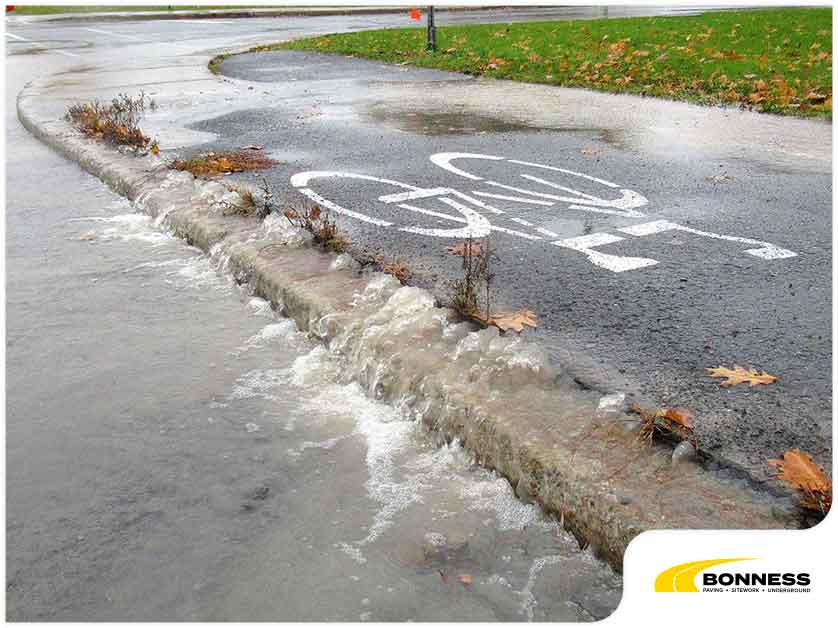
Proper drainage is essential for preserving pavement, particularly in areas where heavy rainfall can cause significant damage. Poor drainage, however, leads to flooding and water pooling on driveways and sidewalks, which can eventually cause structural damage if not adequately addressed. In this post, we will discuss the impact of ineffective drainage on pavement, what kind of damage it can do, and solutions to the problem.

Impact of Bad Drainage on Pavement
Poor drainage causes the pavement to weaken and wear down due to continuous exposure to standing water. The area can also experience buckling and cracking, leading to further damage if left unaddressed. In asphalt pavements, the problem of water pooling causes the material to expand and contract, which leads to cracks, potholes, and, in extreme cases, sinkholes. These problems only worsen over time due to further water damage caused by rain or other sources of moisture.
The long-term effects of inadequate drainage on pavement can be severe. The most common issues caused by a lack of drainage include traffic safety, erosion, deformation as a result of reduced road capacity, and shortened life span.
Solutions for Bad Drainage
Fortunately, there are several solutions to help you prevent the damage caused by poor drainage. These include:
-
Catch Basins and Drains. Catch basins and drains are used to prevent water accumulation or flash floods on roads, parking lots, or driveways. It has a grid on the surface through which water runoff flows from these areas. The runoff is then collected and transported to drains via underground pipes.
-
French Drains. French drains are perforated pipes surrounded by gravel or rock and installed on trenches, which are then covered with pavement. They also help prevent water damage by collecting runoff and diverting it to storm drains.
